The post The Evolution of Turntables: Analogue vs Digital appeared first on Onthedex.
]]>
In the ever-evolving world of DJing, the debate between analogue and digital turntables continues to be a topic of lively discussion. This post aims to delve into the nuanced world of turntablism, exploring the distinctive qualities, advantages, and drawbacks of both analogue and digital turntables.
An analogue turntable – Technics 1200 in silver
A Digital turntable – Pioneer DJ XDJ-700
Analogue turntables, revered for their traditional touch and warm, vinyl sound, have been the cornerstone of DJ culture since its inception. They offer a tactile experience that many purists argue is unmatched, allowing for a more ‘organic’ interaction with music. On the other hand, digital turntables have revolutionized the industry with their technological advancements, offering DJs an array of features like BPM matching, digital effects, and the ability to mix tracks from various digital sources.
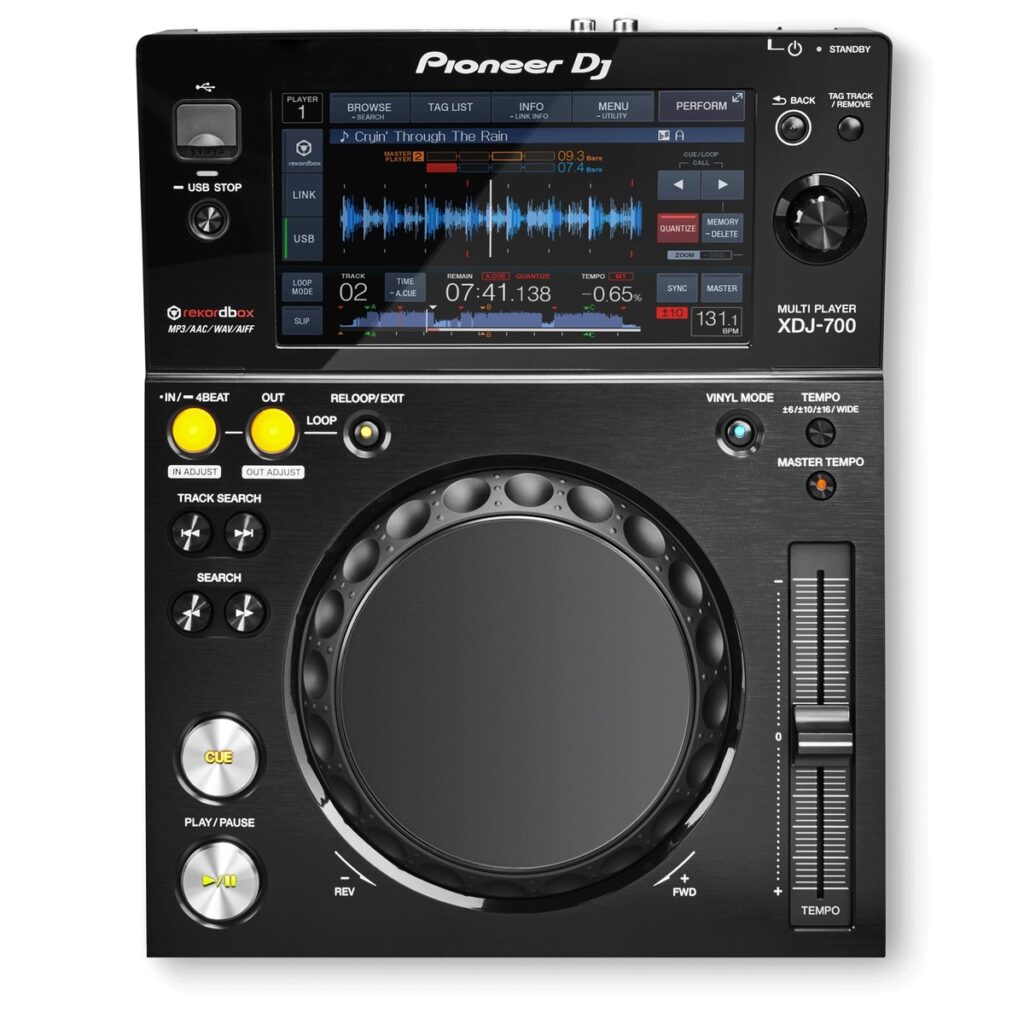
Each format carries its unique set of pros and cons, influencing the art and style of DJing in different ways. This post will guide you through these differences, helping both aspiring and seasoned DJs understand which turntable might best suit their artistic needs and why. Whether you’re a fan of the classic feel of vinyl or the innovative features of digital technology, this exploration will shed light on the intricacies of both worlds, offering insights into the heart of DJing culture.
Analogue and digital turntables, whats the difference?
When delving into the world of DJ turntables, it’s essential to understand the fundamental differences between analogue and digital models. These differences don’t just influence the technical aspects of DJing but also affect the overall experience and style of the DJ.
Analogue Turntables
The best over all analogue turntable – Technics SL1200.
- Sound Quality: Analogue turntables are known for their rich, warm sound that vinyl records produce. This sound is often described as more ‘authentic’ and ‘organic,’ resonating well with audiophiles and traditionalists.
- Tactile Experience: The physical interaction with vinyl and the turntable is a key aspect. Manipulating the record by hand for beat matching and scratching offers a unique tactile experience that many DJs cherish.
- Simplicity and Artistry: Analogue setups tend to be more straightforward but require more skill to manipulate the music. Techniques like beat matching and transitioning are done manually, which many argue allows for greater artistry and individual expression.
- Physical Media: The use of vinyl records means DJs have a tangible music collection. It also often involves crate digging for rare and unique records, which is a revered part of DJ culture.
Digital Turntables
The best over all digital – Pioneer DJ XDJ-700
- Advanced Features: Digital turntables offer features like BPM analysis, loop functions, hot cues, and extensive libraries of digital effects. These features can enhance creativity and provide more tools for DJs to experiment with.
- Convenience and Flexibility: Digital turntables allow DJs to carry thousands of tracks on a laptop or USB drive, offering vast musical choices and easier transport than crates of vinyl.
- Ease of Use: Features like automated beat matching can make it easier for beginners to learn and perform. However, some argue this can detract from the skill and craftsmanship of DJing.
- Integration with DJ Software: Digital turntables are often designed to integrate seamlessly with DJ software, opening up possibilities for music production, remixing, and more extensive control over the music.
The Hybrid Approach
It’s worth noting that many modern DJs adopt a hybrid approach, blending the best of both worlds. This can involve using digital systems that emulate the feel of vinyl or combining traditional turntables with digital tools and effects. A good example of this is timecode vinyl.
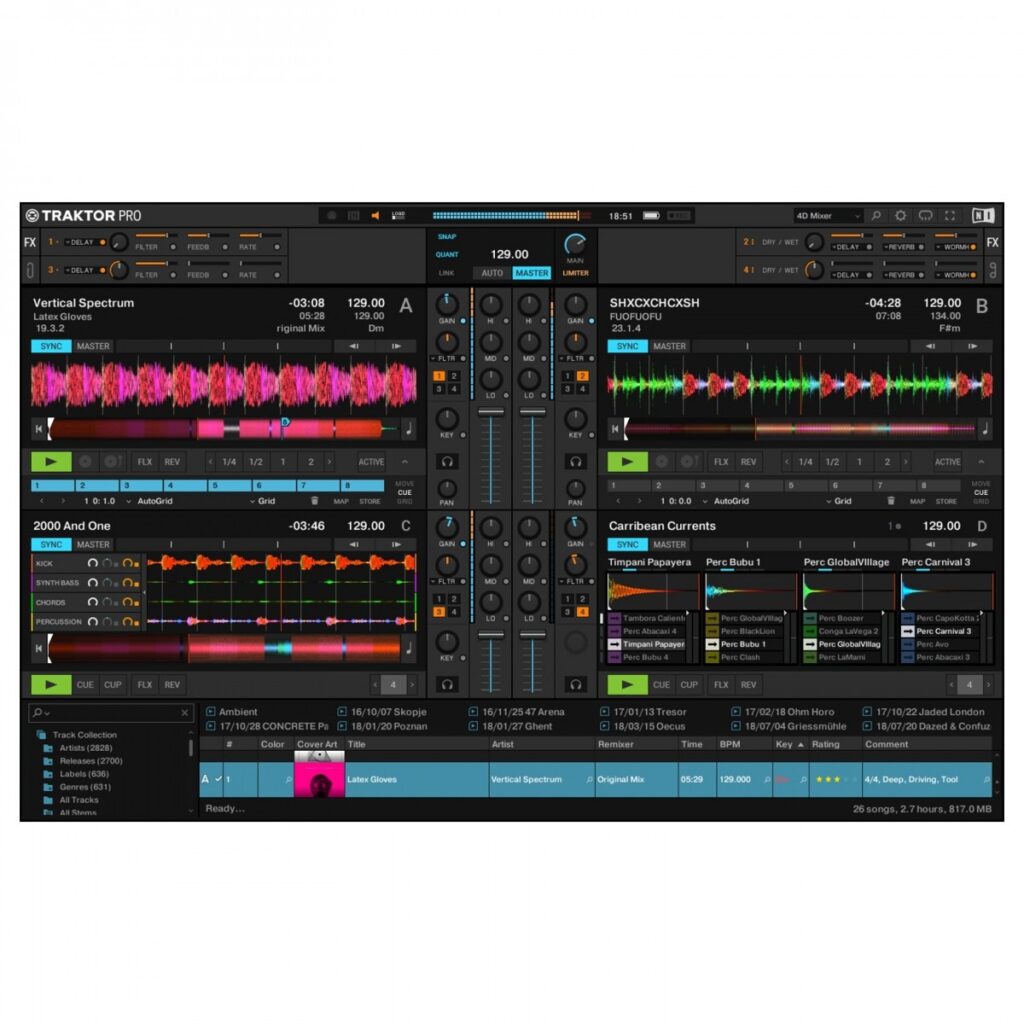
Timecode vinyl uses a standard analogue mixer and turntable setup, with a controller unit connect to the output of each turntable. The controller is also connected to a computer. The output of the controller is connected to the inputs on the mixer. A special timecode vinyl is played on the turntable, allowing the DJ to play mp3’s off the computer as if they were standard vinyl on the turntable.
How to choose one?
The decision between analogue and digital turntables depends on several factors, ranging from your DJing style to practical considerations. Here are some key points to consider when making your choice:
Consider Your DJing Style and Preferences
- Traditional vs. Modern: If you’re drawn to the traditional aspects of DJing, including the tactile feel of vinyl and the art of manual beat matching, analogue turntables might be your preferred choice. Conversely, if you’re excited by the prospect of integrating technology, effects, and the ease of digital libraries, digital turntables could be more suitable.
- Music Genre: Certain genres of music lend themselves better to specific types of turntables. For instance, hip-hop DJs often prefer analogue turntables for scratching and beat juggling, while electronic music DJs might lean towards digital turntables for their versatility and range of effects.
Evaluate Practical Aspects
- Portability and Space: Digital turntables, often more compact and lighter, are easier to transport and require less physical space. If you’re frequently on the move or have limited space, this could be a deciding factor.
- Music Library: Consider the size and format of your music collection. If you already have a large vinyl collection, analogue turntables might be more appealing. However, if you prefer the convenience of digital files, digital turntables are the obvious choice.
- Budget Constraints: Generally, starting with digital turntables can be more cost-effective, especially when considering the ongoing cost of purchasing vinyl records. However, the investment in a high-quality analogue setup can be worthwhile for its durability and timeless appeal.
Assess the Learning Curve and Long-term Goals
- Ease of Learning: Digital turntables might offer a smoother learning curve for beginners due to features like automated beat matching. This can be appealing if you’re just starting out.
- Skill Development: If you’re keen on honing traditional DJ skills, analogue turntables offer a more hands-on approach. This can be rewarding in terms of skill development and understanding the roots of DJing.
- Professional Aspirations: Consider where you see your DJ career going. If you aspire to play in clubs that often have standard setups (like Pioneer CDJs), familiarity with digital systems could be beneficial. However, if you’re aiming for a niche market or specific events like vinyl-only nights, analogue could be your path.
Test and Experiment
- Try Before You Buy: If possible, experiment with both types of turntables. Many music stores or DJ academies offer the opportunity to try out equipment, which can be invaluable in making your decision.
- Community and Mentorship: Engage with the DJ community or find a mentor who can offer insights and advice based on their experiences. They can provide practical information on what works best in different scenarios.
In conclusion, while analogue turntables appeal to those who appreciate the classic art of DJing and the unique sound of vinyl, digital turntables offer modern features and convenience. The choice often depends on personal preference, the type of music being played, and the desired interaction with the medium.
CHECK PRICES AT ZZOUNDS
The post The Evolution of Turntables: Analogue vs Digital appeared first on Onthedex.
]]>The post Pioneer XDJ Controllers … Whats the differences? appeared first on Onthedex.
]]>
Pioneer are massive in the world of DJ equipment. Particularly in recent years, Pioneer dj controllers have started to take over the industry!
Pioneer have three XDJ controller units, that are marketed as all-in-one units. But what does that mean and what are the differences between these three excellent units?
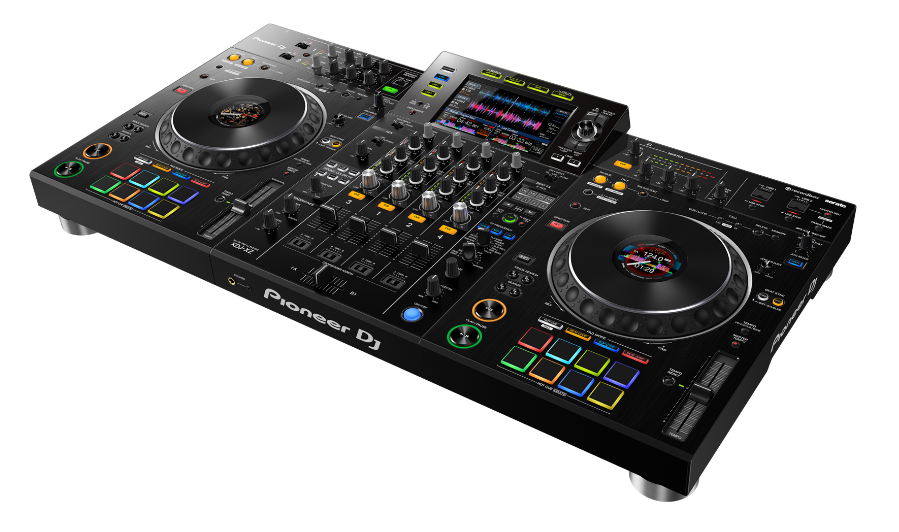
The three Pioneer XDJ all in one controllers
What are the three all in one DJ controllers Pioneer offer? Heres a comparison chart for the three current Pioneer XDJ controllers.
| Feature | XDJ-RX3 | XDJ-XZ | XDJ-RR |
| No Channels | 2 | 4 | 2 |
| Display size | 10.1 inch | 7 Inch | 7 inch |
| Mic input | Yes | Yes | Yes |
| USB Ports | Yes | Yes | Yes |
| Jog wheel size | 6 inch | 8 inch | 7 inch |
| Pads | 16 Multicolor | 16 Multicolor | 8 Multicolor |
| Analog inputs | 2 x XLR-1/4″ Combo (mic), 3 x Dual Stereo RCA (line), 2 x Dual Stereo RCA (phono), 1 x 1/8″ (aux) | 2 x Dual RCA Stereo (phono), 2 x Dual RCA Stereo (line), 1 x Dual RCA Stereo (aux), 2 x XLR-1/4″ combo (mic) | 1 x Dual RCA Stereo (phono/line), 1 x XLR-1/4″ combo (mic) |
| Analog outputs | 2 x XLR (master 1), 1 x Dual Stereo RCA (master 2), 2 x 1/4″ (booth) | 2 x XLR (master), 1 x Dual RCA Stereo (master 2), 2 x 1/4″ (booth), 2 x 1/4″ (send) | 2 x XLR, 1 x Dual RCA Stereo |
| Software | Rekordbox DJ, compatible with Serato DJ Pro | Rekordbox DJ, compatible with Serato DJ Pro (firmware update), Rekordbox Video (sold separately), DVS Control | Rekordbox DJ |
| Effects | 14 x Beat FX, 6 x Sound Color FX | Color FX: Space, Dub Echo, Sweep, Noise, Crush, Filter ; Beat FX: Delay, Flanger, Helix, Phaser, Ping Pong, Pitch, Slip Roll | Echo, Reverb, Flanger, Filter, Noise, Dub Echo, Pitch |
| Price | Currently priced at $2,099.00 or £1,700.00 if in UK. | Currently priced at $2,499.00 or £2,049.00 if in UK. | Currently priced at $1,049.00 or £1,030.00 if in UK. |
(Note all prices current as of January 2024)
XDJ-RX3
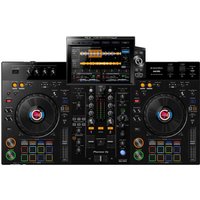
This all-in-one digital DJ system is a blend of intuitive hardware and flexible software. It’s designed for a 2-channel setup. The system features 16 multicolored pads, which are great for creative performance. A 10.1-inch touchscreen display enhances the system. This display provides excellent visual feedback for mixing. It also simplifies browsing through tracks.
The system includes Nexus-style features like Quantize, Beat Sync, and Slip Mode. These features help DJs achieve polished results easily. It offers Sound Color FX and Beat FX to add flair to mixes. Another feature is the Loop Slice. This allows DJs to slice loops and remix them using hot cue pads.
The system supports rekordbox DJ and Serato DJ Pro software. DJs can prepare tracks in rekordbox with cues, loops, and beat markers. Dual USB inputs allow loading music in formats like MP3, AAC, WAV, AIFF, and FLAC.
It also has phono/line inputs for external sources like turntables and media players. Dual mic inputs include XLR and 1/4-inch connectors. This caters to different microphones. Finally, the system offers full MIDI support via USB. This feature allows for control of DJ software.
XDJ-XZ

This 4-channel all-in-one DJ system is innovative and inspired by Pioneer’s NXS2 setup. It’s the first to support Pro DJ Link, enhancing its functionality with CDJs and Pioneer DJ gear. The system comes with 14 Beat FX and 6 Sound Color FX. These features offer a wide range of creative possibilities for DJ sets.
The system is designed for collaborative performances. It allows connecting up to two laptops at once. This feature facilitates back-to-back performances and smooth DJ transitions. The mic input includes a feedback eliminator for clear vocals. The system’s sound quality is exceptional, thanks to 64-bit digital signal processing.
A Master 3-band EQ is another key feature. It lets DJs fine-tune their output for any environment. The system also has 16 performance pads. These pads trigger software-specific features, adding control and interactivity. Side grab handles make the system portable.
The 7-inch LCD touchscreen and color On Jog Displays provide excellent visual feedback. The package includes the XDJ-XZ system, power cord, and USB cable. It also comes with a Quick Start guide, software license notice, and rekordbox dj license key card. This ensures DJs have everything they need to start mixing immediately.
XDJ-RR
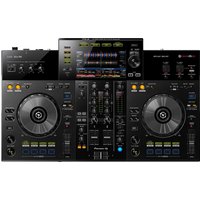
This 2-channel all-in-one digital DJ system merges intuitive hardware with flexible software. It’s ideal for DJs who want a mix of both. The system has a 7″ display for exceptional visual feedback. This makes mixing effortless and track browsing quick and easy.
The system enhances DJ sets with its Sound Color FX and Beat FX. These features allow DJs to add unique elements to their mixes. The Loop Slice is a standout feature. It lets DJs carve and remix loops in real time using hot cue pads. This feature brings a dynamic and improvisational feel to performances.
The system includes a rekordbox dj software license. Rekordbox dj is popular for music management and performance. It allows DJs to prepare tracks with cues, loops, and beat markers in advance.
The system has dual USB-A ports. These support various music file formats like MP3, AAC, WAV, and AIFF. DJs can load tracks from flash media and mobile devices. Additionally, there are phono/line inputs. These inputs allow mixing external sources like turntables and media players.
The system also has a mic input with XLR and 1/4″ connectors. This caters to different microphone types. Full MIDI support via USB is another feature. It gives DJs more control over their DJ software. These features make the DJ system versatile and powerful for both aspiring and professional DJs.
Which to choose?
Ultimately your choice is going to come down to your budget. There is quite a difference between the prices. In particular the RR version is a lot chepaer than the other two. But depending what you are going to use it for, this unit might fit the bill.
Whichever you choose, you will get Pioneer DJ’s excellent build quality and reliability. All three units are excellent, professional audio controllers that any DJ would be happy to own.
CHECK PRICES AT ZZOUNDS
The post Pioneer XDJ Controllers … Whats the differences? appeared first on Onthedex.
]]>The post The Best Electric Drum Kits appeared first on Onthedex.
]]>
Welcome to our latest blog post, where we dive into the electrifying world of Electric Drum Kits! As music continues to evolve, so does the equipment used to create it, and nothing exemplifies this more than the rise of electronic drum kits. These innovative instruments have revolutionized drumming, blending traditional rhythms with modern technology to offer an unparalleled musical experience. Whether you’re a seasoned drummer looking to expand your horizons or a beginner eager to start your drumming journey, electronic drum kits open up a universe of possibilities.
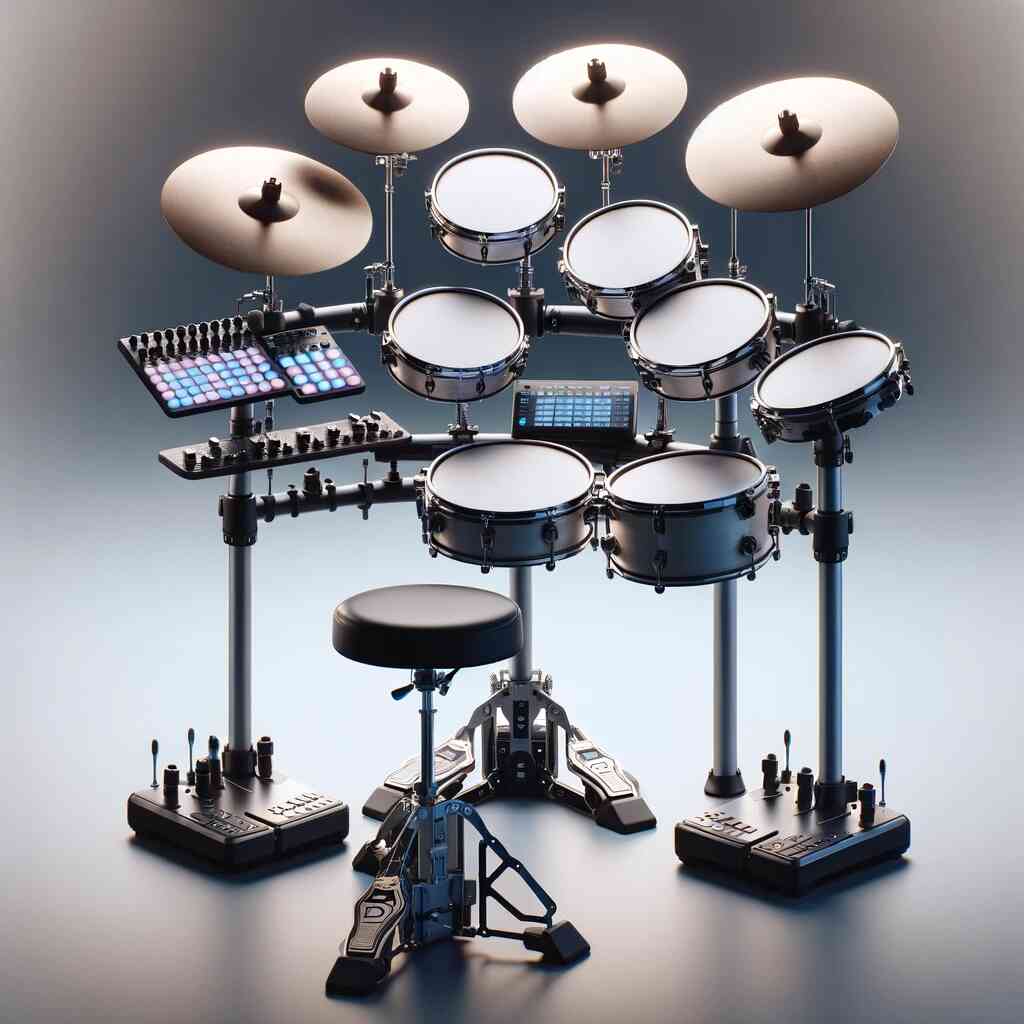
In this post, we’re going to explore everything you need to know about electronic drum kits. From the compact, apartment-friendly setups to the stage-ready powerhouses, we’ll delve into the features, benefits, and even some of the challenges these Electric Drum Kits marvels present. We’ll also look at how electronic kits compare to their acoustic counterparts, and why they might be the perfect addition to your musical arsenal. So, grab your sticks and headphones, and let’s embark on a rhythmic adventure into the heart of electronic drumming!
3 of the best Electric Drum Kits!
There are loads of electronic drum kits but thee 3 are our picks.
Best Budget Setup
Alesis Nitro Max – Currently, if you’re in the market for an 8-piece kit with mesh heads, especially if you’re searching for an introductory set or a cost-effective electronic practice kit for home use, you won’t find a better option for the price than this one.
The Alesis Nitro Mesh electronic drum kit is a comprehensive set that includes an 8″ dual-zone mesh snare, three 8” single-zone mesh toms, and a 10” dual-zone crash cymbal that is choke-able. Additionally, it features two single-zoned cymbals for the hi-hat and ride, a hi-hat controller pedal, and a sturdy four-post drum rack.
The kit also comes with the Alesis DMPAD kick pad, notable for its durable pressed steel housing, anti-creep spikes, and a single-zone surface. Complementing the kick pad is a substantial kick pedal, alongside necessary assembly tools, drumsticks, and manuals.
Playing the kit reveals its acoustic drum-like qualities, especially evident in rim-shots and cross-stick techniques. The crash cymbal also impresses with its choke capability. The kick pad is particularly stable, exhibiting minimal movement during play.
Given its affordable price, this kit stands out as an exceptional choice for new drummers, earning its place as our top pick in the guide to the best beginner electronic drum sets. It’s also an excellent choice for more seasoned drummers seeking an economical, convenient practice setup at home.
Best Overall
Roland TD-50K2 – At this price point, one would anticipate some truly innovative features. Fortunately, Roland has met these expectations with their highly customizable TD-50K2 kit and 50X module. The digital pads in this setup are also a highlight that we particularly appreciate.
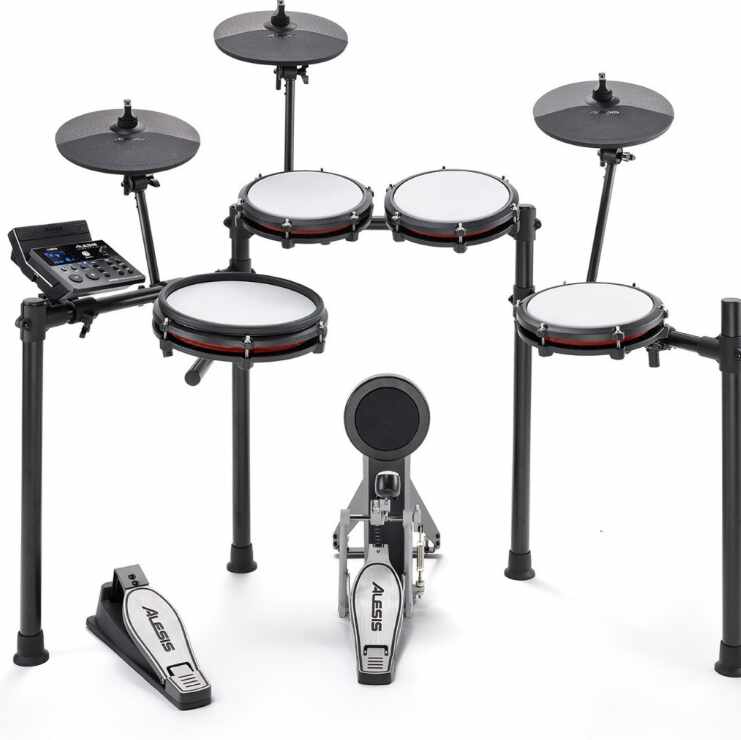
The latest update in Roland’s TD-50 series is the TD-50K2, complementing the more extensive TD-50KV2. The TD-50KV2 features an extra tom pad and a larger, 18-inch KD-180 bass drum, while the TD-50K2 is equipped with a robust KD-140 pad. Both kits are powered by the advanced TD-50X module, which now supports digital ride, snare, and hi-hats, making the K2 the most budget-friendly and compact option for accessing the TD-50X module’s capabilities. Moving beyond the K2, you enter the higher-priced realms of the KV2 or VAD series.
A standout feature of the TD-50K2 is its digital ride, snare, and hi-hats, which connect to the module via USB. The ride, notable for its size and weight, mimics the feel and response of a real cymbal due to multiple surface sensors. Similarly, the snare benefits from digital technology, offering unprecedented authenticity compared to previous models. The VH-14D digital hi-hats are particularly impressive, providing an exceptionally realistic and responsive experience, and are included as standard in the TD-50K2 – the most affordable kit to offer them.
The heart of the kit, the TD-50X module, is the pinnacle of Roland’s V-Drums lineup. It hosts over 900 sounds powered by Roland’s Prismatic Sound Modelling engine, offering extensive editing options for sound customization. Users can import their own samples via SD card, either as primary sounds or blended with others using the ‘sub-instrument’ feature.
Other notable elements include balanced XLR master outputs, a routing engine that separates the headphone monitor mix from the front-of-house mix, and 10-channel USB audio for direct multi-track recording to a computer.
In this price range, groundbreaking features are expected, and Roland delivers with the versatile and highly customizable TD-50X.
Money No Object
Yamaha DTX8K-M – Yamaha maintains its reputation for producing some of the finest Electric Drum Kits available, and the DTX8K-M is a testament to this. This model comes with a module that offers 40 exceptional kit presets, each expertly modeled after Yamaha’s high-quality acoustic drum sets.
Yamaha’s role in musical instrument manufacturing, though a smaller part of their broader business, has consistently resulted in some of the finest acoustic and electronic drum sets on the market. The DTX8 series exemplifies this, with the DTX8K-M standing out as one of Yamaha’s best electronic drum sets to date, in our view.
The heart of any electronic drum set is its module, and the DTX8K-M’s DTX-PRO module doesn’t disappoint. It offers 40 superb kit presets, each modeled after Yamaha’s high-quality acoustic drum sets. With the capacity for 200 user-created kits, the module provides ample opportunity for personalizing your sound across various musical styles. The DTX-PRO module also allows for easy adjustments to ambience, compression, and effects, giving you extensive control over your drum tones.
In terms of playability, the DTX8K-M boasts mesh heads from Remo, a leading industry name, ensuring a realistic and enjoyable drumming experience. Yamaha’s incorporation of mesh heads in this e-kit marks a significant development, catering to players who seek authentic physical feedback. Additionally, the drum set is available with Yamaha’s TCS (Textured Cellular Silicone) heads, which, while more expensive, might be the preferred choice for some players seeking a specific feel.
How to choose the best electric drum machine
In the realm of music production and performance, electronic drum machines have become indispensable tools for artists across genres. These powerful machines offer a blend of versatility, convenience, and innovation, enabling musicians to craft unique beats and rhythms. However, with so many options on the market, choosing the right drum machine can be overwhelming. This article will guide you through the essential features to consider when selecting the best electronic drum machine for your needs.
1. Sound Quality and Variety
The core of any drum machine is its sound. Look for a machine that offers high-quality, realistic drum sounds. A good drum machine should provide a wide range of percussion sounds, allowing you to explore different genres. Some advanced models come with the capability to emulate classic drum machines or offer synthesized drum sounds for more experimental music.
2. Programmability and Sequencing
The ability to program your own patterns and sequences is crucial. Check for intuitive sequencing capabilities, which will allow you to easily create, edit, and play back your rhythms. Look for features like step sequencing, real-time recording, and pattern length options. Some drum machines also offer advanced sequencing features like swing, probability, and randomization, which can add complexity and interest to your patterns.
3. Connectivity Options
In today’s digital age, connectivity is key. Ensure your drum machine has a variety of inputs and outputs, such as MIDI, USB, and audio outputs. MIDI connectivity is particularly important for integrating the drum machine with other electronic instruments and computer software. USB connectivity can facilitate easy data transfer and software updates.
4. User Interface and Controls
A user-friendly interface can significantly enhance your workflow. Opt for a drum machine with a clear, easy-to-navigate interface. Physical knobs, sliders, and touch-sensitive pads offer tactile control and can be crucial for live performance. Additionally, backlit screens or LED indicators are helpful for visibility in different lighting conditions.
5. Portability and Build Quality
If you plan on using your drum machine for live performances or traveling, consider its portability. A compact and lightweight design can be a huge advantage. However, don’t compromise on build quality – a robust and durable drum machine will withstand the rigors of regular use and transport.
6. Budget and Value for Money
Drum machines come in a wide range of prices. Determine your budget and assess the features available within that range. Higher-priced models often offer more features and better build quality, but there are also many affordable options that provide excellent value for money.
7. Additional Features
Some Electric Drum Kits offer extra features that can enhance your creative possibilities. These might include onboard effects (like reverb and delay), sample import capability, or the ability to control external gear. Consider which additional features might be beneficial for your music-making process.
Conclusion
Choosing the right electronic drum machine depends on a balance of sound quality, functionality, usability, and budget. Whether you’re a beginner looking for a simple rhythm accompaniment tool or a professional seeking a sophisticated beat-making device, there’s a drum machine out there to suit your needs. By considering these key features, you can make an informed decision and find a drum machine that will be a valuable addition to your musical arsenal. Remember, the best drum machine is one that inspires you to create and explore new rhythmic territories.
CHECK PRICES AT ZZOUNDS
The post The Best Electric Drum Kits appeared first on Onthedex.
]]>